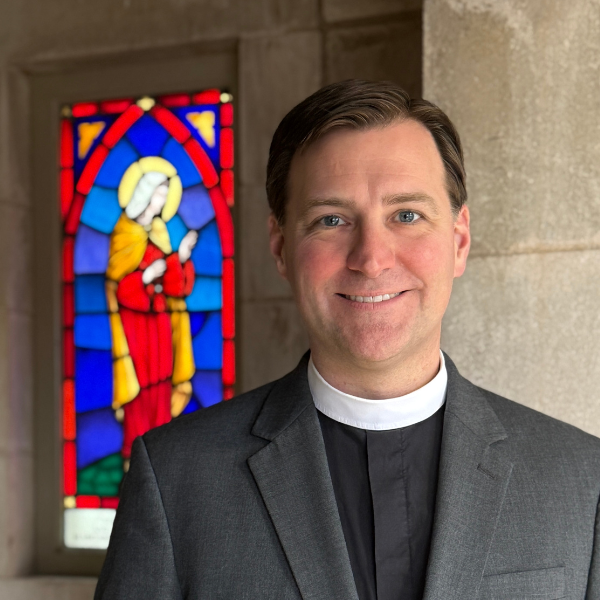
Our History
Land Acknowledgment
The land on which we gather week in and week out is the ancestral homeland of the Aniyunwiya (Cherokee) and Chikashsha (Chickasaw) peoples. These nations, whose deep connection to this land stretches back centuries, nurtured and protected it long before colonization.
We honor the Aniyunwiya and Chikashsha for their rich cultural traditions, their resilience, and the sacrifices they made in the face of injustice, including the forced removal through the Trail of Tears during the 1820s and 1830s. Three groups, totaling 2,300 people, passed through the Tuscumbia, Courtland, and Decatur Railroad. Herded like cattle, they camped in warehouses before being sent to the Decatur Depot. This journey was marked by suffering and injustice, symbolizing a dark chapter in Native American history.
Decatur, AL
Located in the foothills of the Appalachian Mountains, the town of Decatur was laid out in 1820 on the banks of the Tennessee River. Originally known as Rhodes Ferry, the town was given its current name in honor of the great Commodore Stephen Decatur. After being incorporated in 1826, Decatur grew and prospered until the Civil War when it was occupied by Union forces who destroyed all but five of its buildings. When the war ended in 1865, Decatur faced the task of reconstruction amid the hardship and humiliation imposed by the military government. However, the age of the steamboat was dawning, railroad building resumes, and the economy began to improve. Because of Decatur’s location on the Tennessee River, its railway connections and its strategic location in the center of the beautiful Tennessee Valley, the town flourished. With the growth of Decatur came the desire for an Episcopal Church. Thus a small group of Episcopalians, who had previously worshiped together in homes, organized St. Paul’s Episcopal Church in 1867. For the next twenty years, both the church and the town prospered.

1830s Forts Decatur and Bainbridge
Before St. John’s – St. Paul’s
The next year, 1888, Decatur suffered a yellow fever epidemic, its second outbreak in ten years. Citizens panicked and began to flee the town. Wagons, carriages, and buggies could be heard rumbling over the streets at all hours of the day and night. Quarantine was clamped on both Old and New Decatur. Trains sped through with all windows and doors locked and fumigators blowing. At this time no one knew that it was the common mosquito that carried the deadly germ yellow fever. The epidemic dealt the area’s economy a severe blow. Many of the panic-stricken citizens never returned.
Members of St. Paul’s Episcopal Church underwent an additional tragedy in 1888 when their beautiful and beloved little church burned to the ground. Naturally, parishioners talked of rebuilding, but resentment began to brew over the location of the next church. Original members wanted St. Paul’s to remain in Old Decatur while newcomers wanted the church rebuilt in New Decatur on land that had been given to St. Paul’s. Finally, the newcomers (approximately 75 in number) withdrew from St. Paul’s in order to begin their own church. St. Paul’s continued until 1930 when it was declared defunct.
The First Meetings
The group of newcomers who left St. Paul’s in 1890 immediately began plans for a church of their own. Theirs was a mammoth undertaking. The inflationary bubble had burst, the citizens of Decatur were victims of a crippling economic decline and many businesses were pushed to the brink of bankruptcy. Undaunted, in 1890, this group signed the articles of association to become St. John’s parish.
St. John’s communicants were anxious for a rector and an earnest search began. Efforts were eventually rewarded when, in 1892, Dr. Erastus Wooster Spalding accepted a call issued jointly by St. John’s and St. Paul’s. The two parishes had realized that it was financially necessary to share the rector. Dr. Spalding served for nine years. Achievements during his tenure included the construction in 1893 of the building where St. John’s members still worship. The cost of construction was less than $2,000.

First Meeting 1890 Tavern Hotel
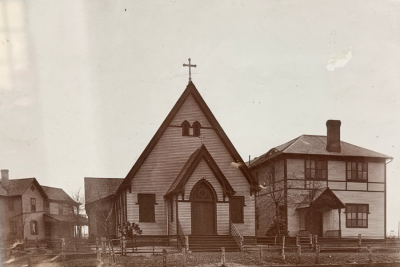
St John’s and Guild House facing Jackson St
The Church & Its Community Grow
During Dr. Spalding’s tenure, Decatur continued to be chiefly an agricultural town as evidence by the fact that a committee was appointed to have a fence built around the church. This was necessary because livestock laws were lax. Cows, horses, and the mules that pulled the city trolleys often visited St. John’s grounds where the grass was the greenest and most succulent.
The dedication and energetic service of the St. John’s early lay people serve as an example to us all. The same names appeared on the Vestry roster year after year. These names are familiar to and even related to many of our present day parishioners.
Although not involved as leaders of St. John’s in the early years, women did serve the church in many other ways. The Women’s Guild, formed in 1891, constantly helped with fundraising by selling homemade ice cream and cake, holding oyster suppers, and even taking orders for sewing. The ladies made aprons prices at 25 cents for checked fabric and 35 cents for white. Orders increased until every woman in town must have been wearing a St. John’s apron. Money raised by the Guild was used for purposes such as insurance, lights, fuel, liens for the rectory, and cassock for the rector.
In 1927, by an act of the legislature, Old Decatur and New Decatur (also called Albany) were consolidated into the city of Decatur. New industry continued to settle in the area and both Decatur and St. John’s grew.
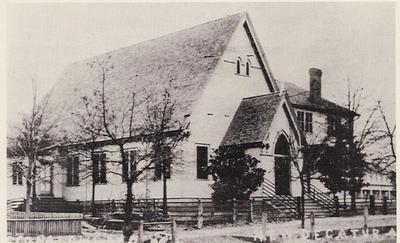
St. John’s Episcopal Church as it faced Jackson Street
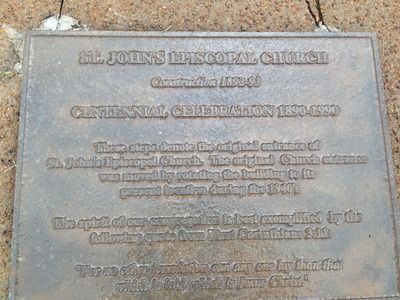
Jackson Street Marker
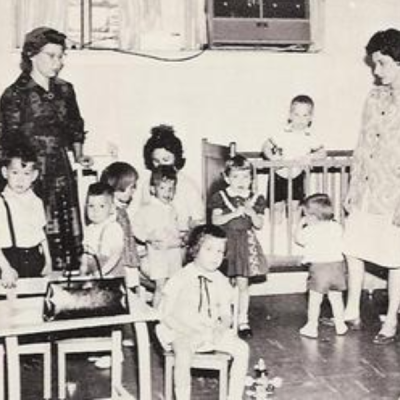
1963 Nursery
Hard Work & Improvements
Through the years, at St. John’s fellowship has always been combined with spiritual growth and hard work. Church records tell of hayrides, picnics, boating, Easter egg hunts, and covered dish suppers.
During the past fifty years, the following improvements have been made at St. John’s:
- limestone veneer added
- tower built
- sidewalks poured
- landscaping planted
- pews and air conditioning added
- lighting and wiring change
- memorial stained glass windows installed
- new organ installed (1981)
- bell hung (1988)
- chapel built (1988)
- sacristy enlarged
- pews and kneeling stands upholstered
- cloistered garden constructed
- tower lighted
- columbarium added
- copper roof was installed
- parish house enlarged for the third time to improve Sunday school, kitchen, office and library facilities
From our first rector to our last, St. John’s has been served by faithful spiritual leaders. The rector with the shortest tenure was the Reverend Furman Charles Stough who resigned after only 8 months to become the Bishop of Alabama in 1971. Next came the Reverend Charles McKimmon, the rector who served St. John’s the longest term, twenty-one years, beginning in 1971 and ending in 1992. In 1990, as part of our 100th anniversary celebrations, the parish hosted the Diocesan Convention.
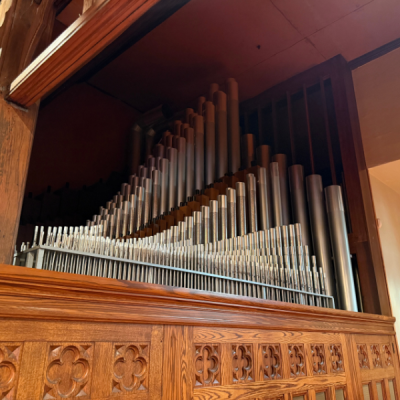
St. John’s Organ
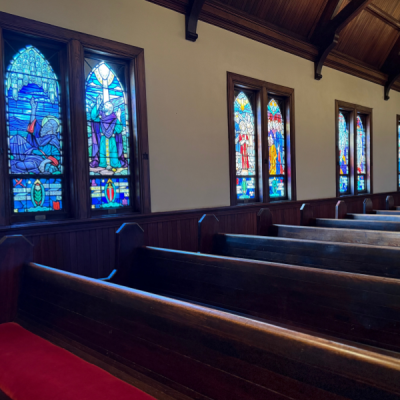
Stained Glass Windows

Bell Being Installed
100 Years of St. John’s
In January 1993, Mr. McKimmon was succeeded by the Reverend Canon Nathaniel Wilson Massey, whose unexpected death in May 1998 shocked and saddened our parishioners. During Father Massey’s five and one-half years of service, a long awaited dream was realized when in September 1994, fifty-seven members of St. John’s were commissioned to form a mission church in the southwest section of Decatur. Seventeen months later, the Church of the Good Shepherd Episcopal gained parish status; both this new church and St. John’s continue to grow.
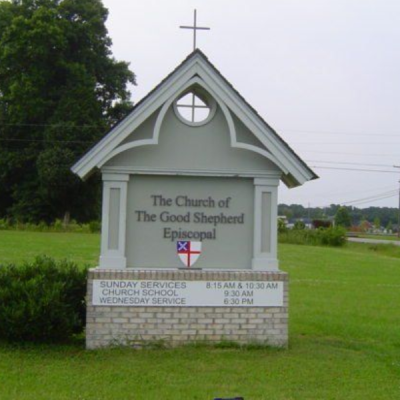
Good Shepherd
Expanding Our Ministry
The early 2000s were marked by the wonderful leadership of The Rev. Rich Webster and The Rev. Richard Lawson who continued to grow the church and find new ways to serve our community. Notably, the church purchased the old hospital behind our building, renovated it, and offered (and continues to offer it) to The Community Free Clinic and Parents and Children Together rent free.

More Work and Improvements
The Rev. Evan Garner joined St. John’s as Rector in 2011. In addition to expanding our outreach ministries, he led the church in a capital campaign and the church undertook many major renovations, including expanding and updating the kitchen and serving area, expanding and updating the Parish Hall, creating accessible entrances, and adding an elevator among other things.
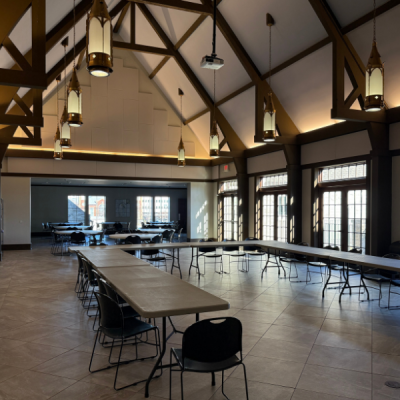
Updated Parish Hall
St. John’s Today
The Rev. Chase Ackerman joined the staff as Rector in August of 2019 just before the COVID Pandemic began in 2020. Even while this was a difficult time, the church was able to not only make major improvements to our A/V and technology systems (which allow us to stream our Sunday services), but we were also able to learn how to grow together as the Body of Christ in new and meaningful ways.
In the wake of the pandemic, life at St. John’s is just as full and vibrant (if not more so) than it was before. Together we are continuing to discover more and more ways in which we can Love God, Love our Neighbor, and Love Ourselves ever aware of the fact that St. John’s was established and nurtured by a group of devout people who saw in Decatur a strong need for an Episcopal Church. The story they began is one of faith and foresight. They built broadly, not for themselves alone, but for generations to come. Their vision allows us to server our Lord through this parish. We look to the future with hope and expectation and, as our founders did, we step forward together in faith.
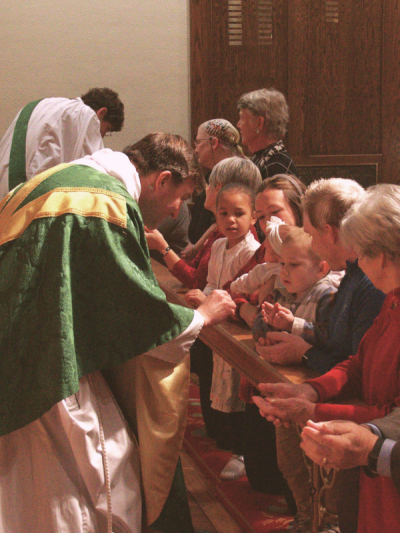
Our Rectors Through the Years
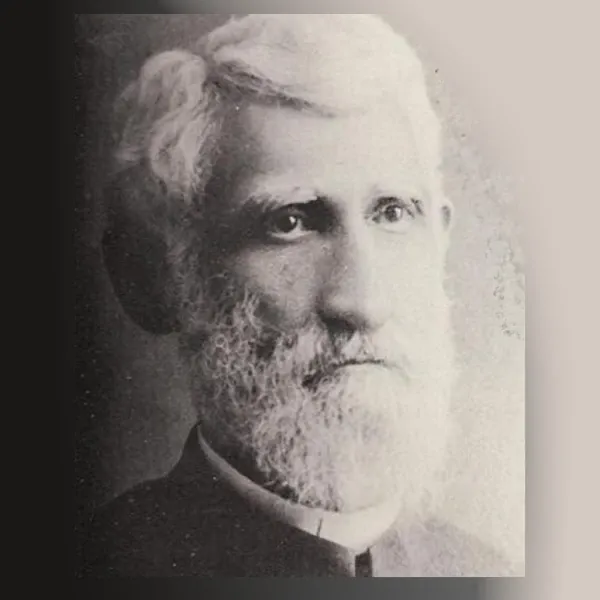
Dr. Erastus W. Spalding
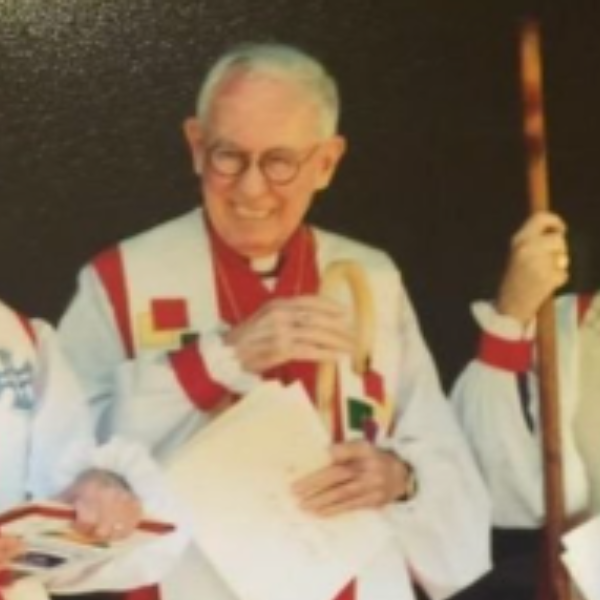
The Rt. Rev. Furman Charles Stough
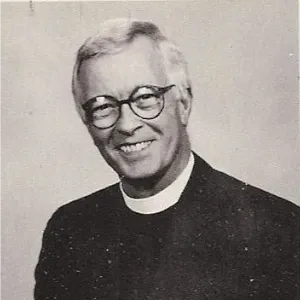
The Rev. Charles McKimmon
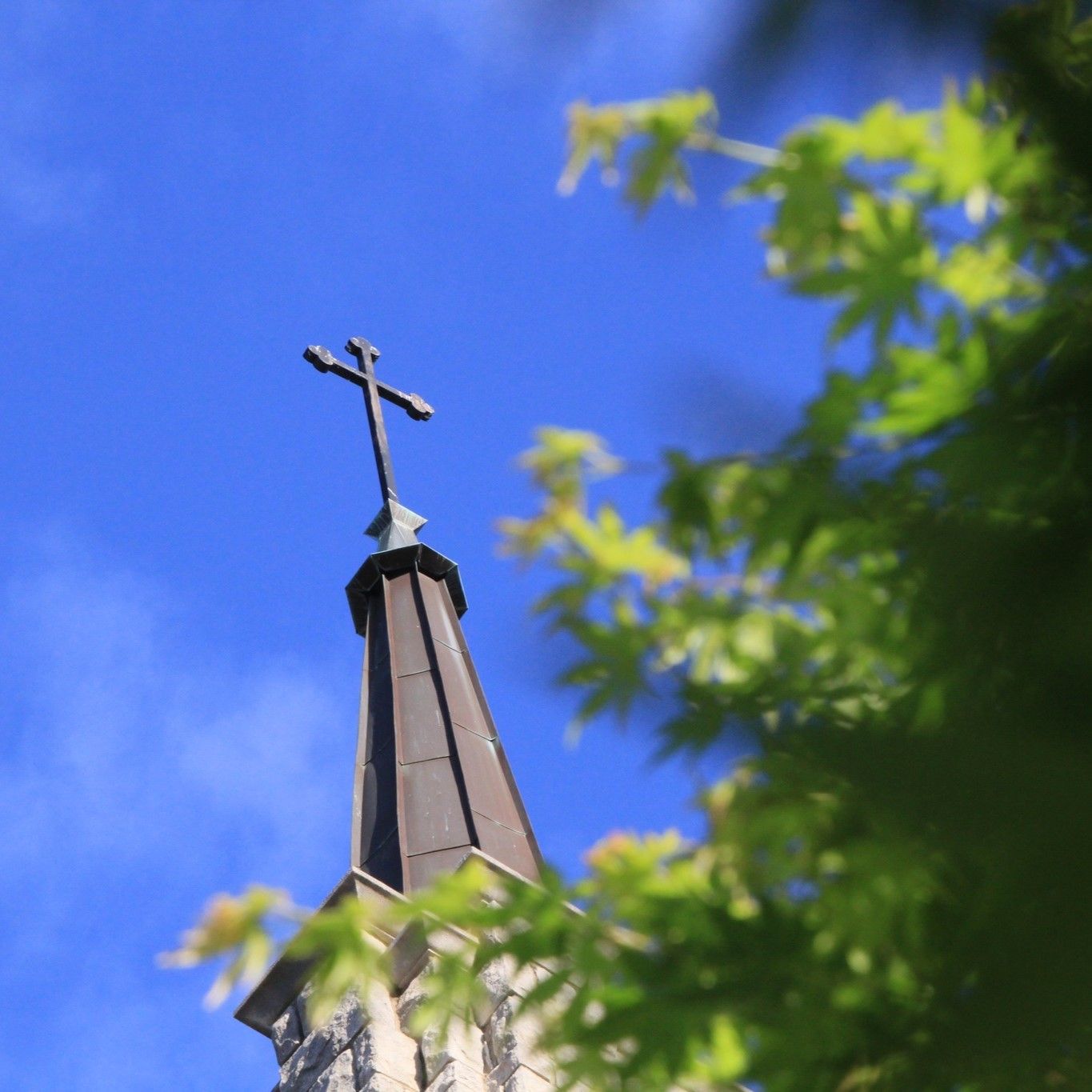
The Rev. Canon Nathaniel Massey, Jr.
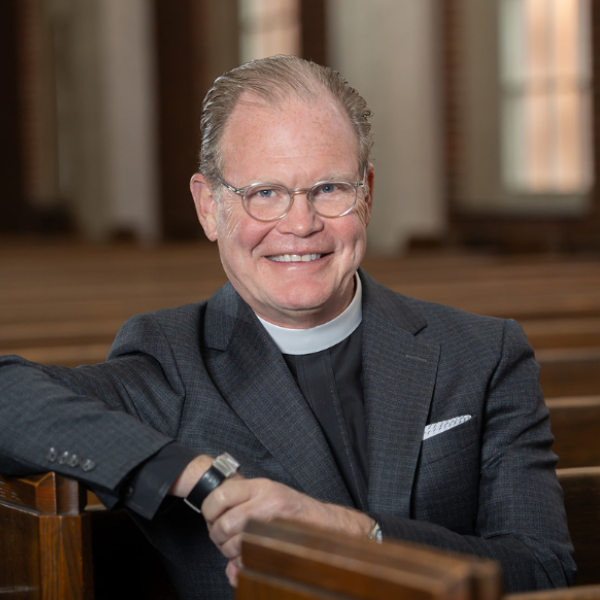
The Rev.
Rich Webster
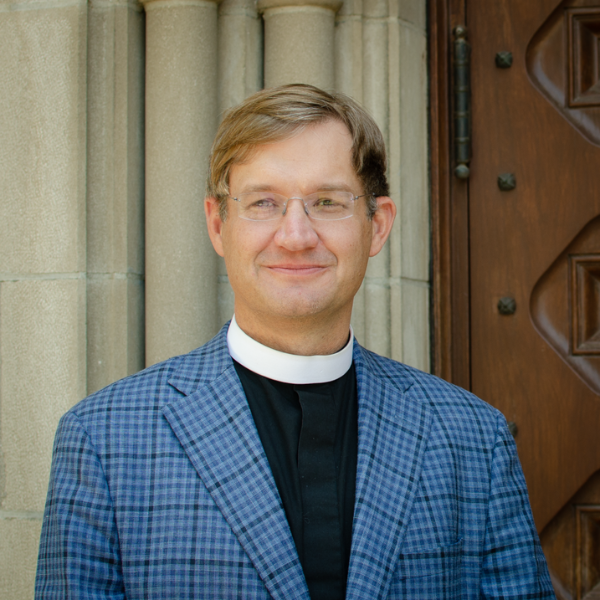
The Rev. Richard Lawson
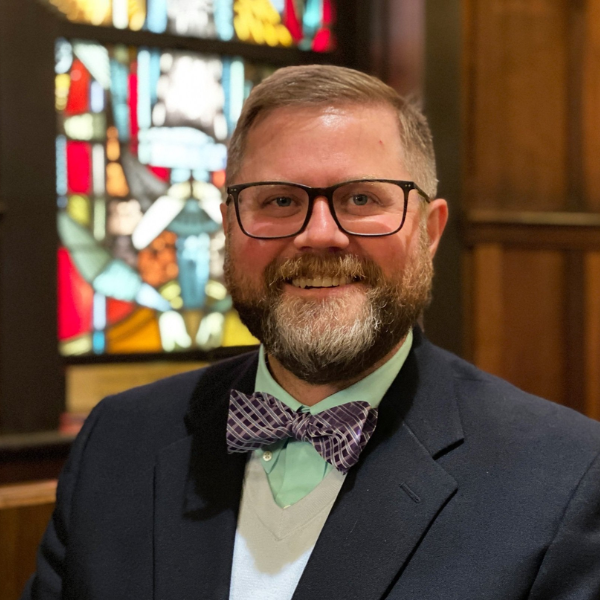
The Rev. Evan D. Garner
